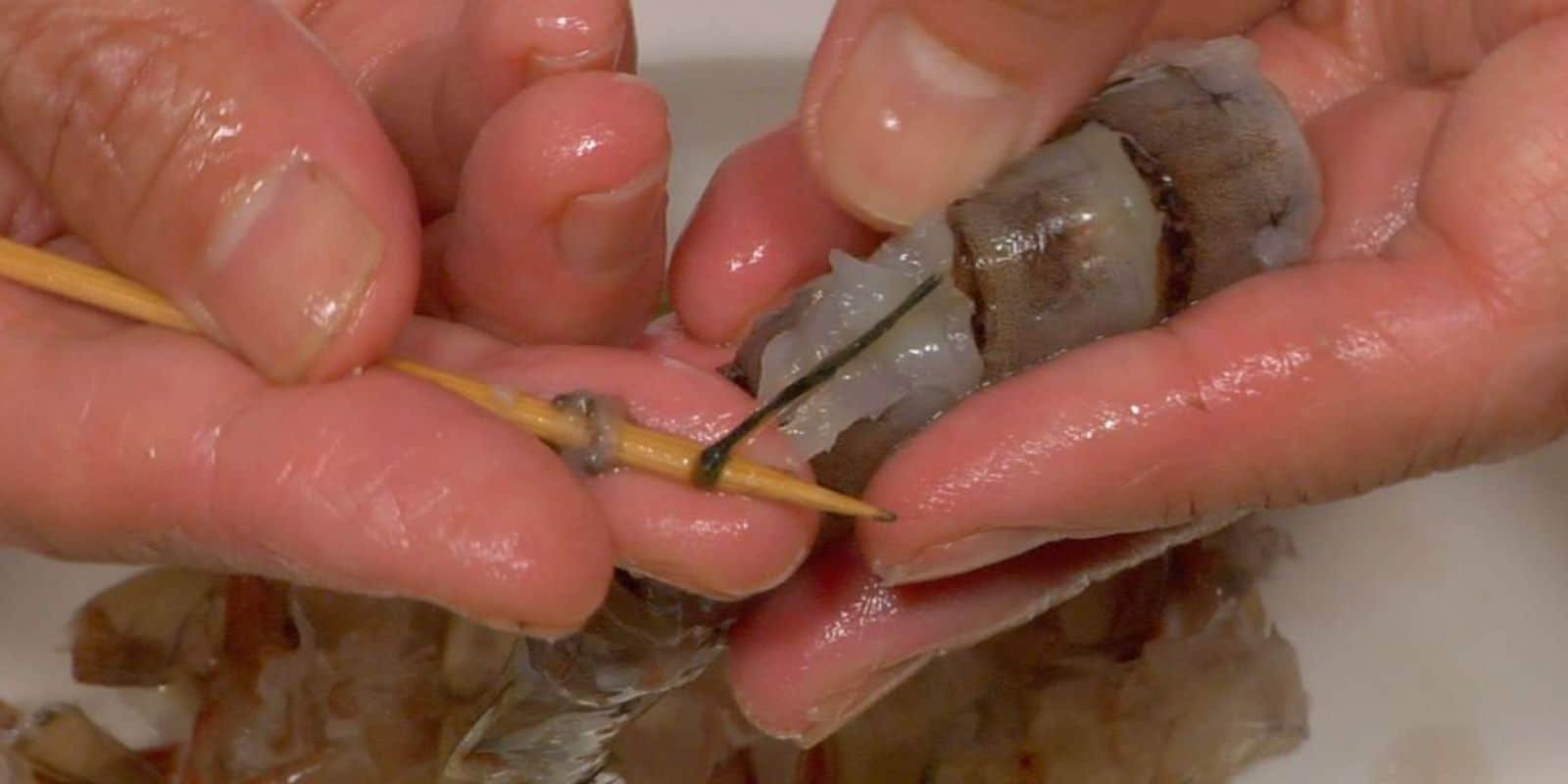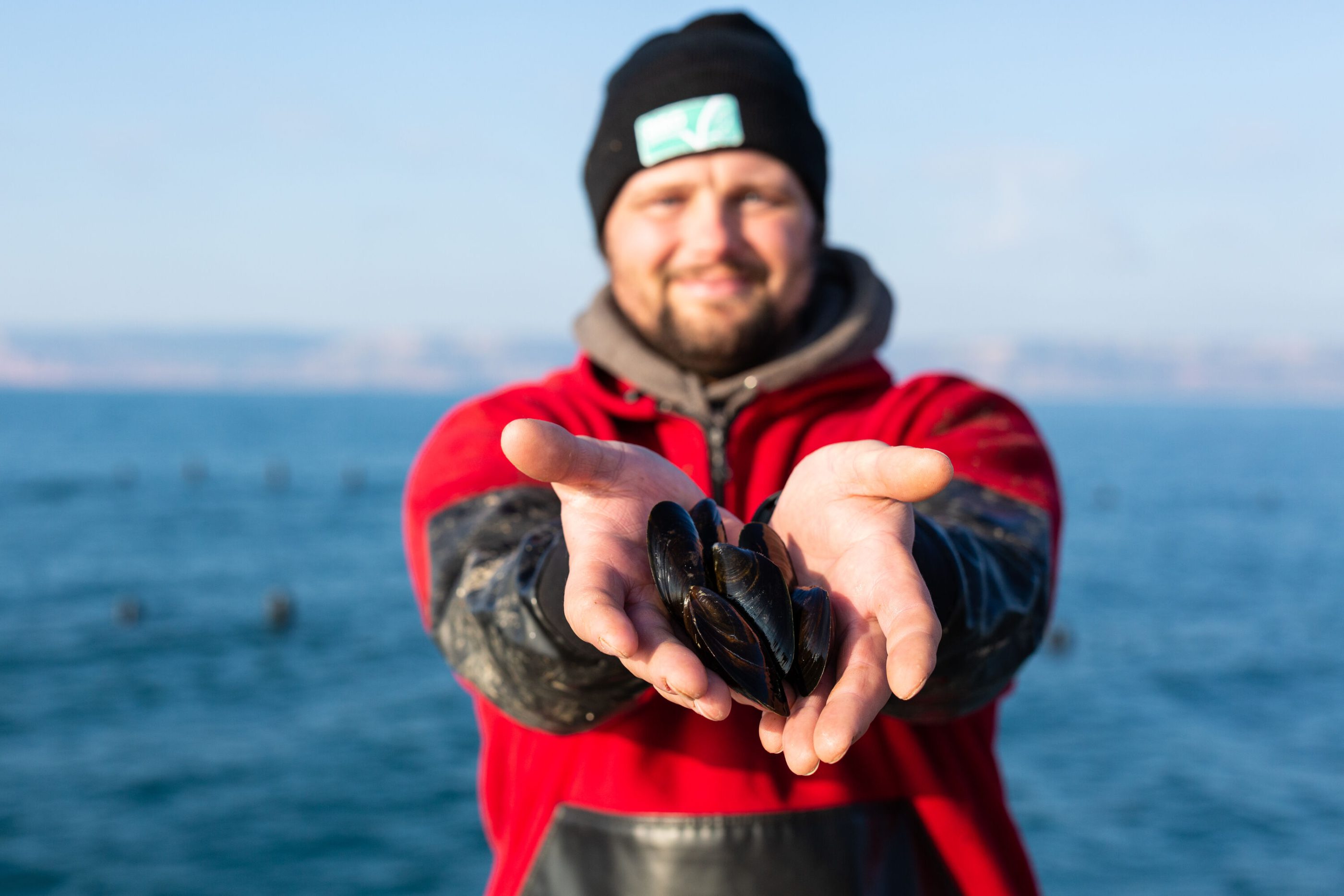Surprisingly, this is one of the most-searched questions about shrimp! It’s easy to be turned off by seafood when you see strange body parts, so let’s clear things up and get you back to enjoying tasty shrimp dishes.
Shrimp are a beloved seafood, but their anatomy can cause confusion when it comes to preparation. Many cooks have pondered whether shrimp have one or two “poop veins” that need removal. Let’s explore shrimp structure to solve this mystery once and for all.
Shrimp Digestive Tract – The First “Vein”
On the curved upper side of a shrimp is a dark string running along the length of the body. Colloquially called the “poop vein,” this structure is actually the digestive tract, not a vein. It runs from the head end where the mouth is located to the tail end holding the anus.
The digestive tract contains gritty particulate matter from processing nutrients. This offers no health hazard, but provides an unappealing texture. For this reason, the digestive tract is commonly removed in a process called “deveining.”
Shrimp Nervous System – The Second “Vein”
On the flat underside of a shrimp lies a translucent pinkish thread known as the ventral nerve cord Part of the shrimp’s simple nervous system, this structure resembles a vein in appearance
Unlike the digestive tract the nerve cord does not hold waste material. It transmits nerve signals the length of the body to control movement.
The ventral nerve cord contains little flavor and does not require removal. But fastidious preparations may choose to eliminate it for aesthetic purposes.
To Devein or Not to Devein?
With two vein-like structures present, should both be removed when preparing shrimp? Here are some guidelines:
-
Always devein the digestive tract if grittiness is undesired. This is especially recommended for large shrimp where the tract is more prominent.
-
Deveining the nerve cord is optional since it does not affect texture or taste. Still, removing it can improve appearance.
-
When leaving the nerve cord intact, trim away any portions accidentally pulled out during deveining to prevent an unsightly ragged look.
-
For very small shrimp, deveining either structure has negligible impact since both are tiny. Deveining may be skipped.
-
When deveining, make an incision only deep enough to access the structures. Avoid cutting deeper into the shrimp flesh.
The choice comes down to personal preference. Both veins may be extracted for maximal aesthetic appeal. But the digestive tract alone is adequate to improve palatability.
Deveining Methods for Shrimp
Removing the digestive tract and nerve cord can be done in various ways:
-
Slit and pull: Make a shallow incision along the back curve and gently pull out veins. Use fingers or a toothpick.
-
Fork lift: Insert tines under the vein, lift upwards, then pull out. No slitting required.
-
Toothpick hook: For nerve cord, insert a pick beneath, hook upwards, and draw out through the underside.
-
Shrimp deveiner tool: Specialized U-shaped blades easily slit, expose, and remove veins in one motion.
-
Pinch and rip: For small fresh shrimp, simply pinch the vein between fingers and gently tear it loose.
Whichever approach you use, be careful not to mangle the shrimp. Only shallow cuts are needed for access. Rinse thoroughly after deveining to eliminate residue.
Do Shrimp Veins Impact Food Safety?
While veins may seem unappetizing, leaving them in poses no health risks:
-
The digestive tract only contains natural waste material from the shrimp itself. It does not introduce contamination.
-
The nerve cord is a sterile tubular structure that transfers signals. It does not harbor pathogens.
-
Thorough cooking destroys any bacteria present within veins, leaving the shrimp safe to eat.
The only concern is personal distaste for texture or appearance. For food safety, properly cooking the shrimp is what matters most.
Are the Veins Edible?
If you don’t mind the added crunch, shrimp veins provide an edible part often discarded. While not the tastiest morsels, they offer these nutrition benefits:
-
Protein: Veins contain muscle fibers that deliver extra protein, supporting dietary needs.
-
Chitin: This fibrous material found in the digestive tract may promote gut health.
-
Marine oils: Nerve cord lipids provide heart-healthy omega-3 fatty acids.
Veins make up a small portion of overall shrimp meat. But if willing to consume them, expect a modest supplement of protein, fiber, and lipids.
Key Takeaways on Shrimp Veins
Shrimp contain two structures colloquially called “veins” that resemble human veins – the digestive tract and the nerve cord. For ideal texture, the digestive tract is commonly removed in a process called deveining. The nerve cord may also be removed, but mainly for cosmetic purposes. Both veins are edible and pose no safety hazards. When preparing shrimp, you can devein neither, one, or both veins to match your personal preferences or the recipe needs. Just be sure to use a gentle approach to avoid tearing the delicate shrimp meat.

Why ASC?We set the standard for seafood. If you see the ASC label on pack, you can be sure that your seafood was farmed with care.

There’s a black line on the top of my shrimp – what is it?
Yes, that’s poop you can see on top of the shrimp. The black line there is its digestive tract. It’s safe to eat, but in general people tend to prefer their shrimp deveined, i. e. with the digestive tract removed, because the tract can have a bitter taste and a sandy texture. You can buy shrimp that has already been deveined if you’d like, or you can do it yourself at home. It’s easiest to do this before you cook the shrimp.
Is the vein in shrimp poop?
Is there a vein on both sides of shrimp?
Indeed, there are veins (or more accurately, vein-like structures) on both sides of shrimp; however, they are not quite the same. On the top side (curved side) of a shrimp, you’ll find the dark “vein” also known as “sand vein” which is actually the shrimp’s digestive tract.
What does a shrimp vein look like?
The thin string filled with dark grit that runs along the back of a shrimp just beneath the surface is referred to as the ‘vein’. Technically, it is not a vein but the shrimp’s digestive tract. Peeling by hand can leave the shrimp cleaner and more intact.
Does a shrimp have a blood vein?
For smaller shrimps however, that shouldn’t be a problem. On the underside (flatter side) of the shrimp also, there is another, less noticeable “vein” called the blood vein, which is more noticeable on large shrimps. This lighter and more translucent line is actually the shrimp’s ventral nerve cord which is part of its nervous system.
What happens if you eat a shrimp vein?
The vein in shrimp is not harmful if accidentally eaten, but it can make the shrimp look unappetizing and add some grittiness to the bite. To remove the vein, make a shallow cut along the back of the shrimp and then pull it out using the tip of your knife.
